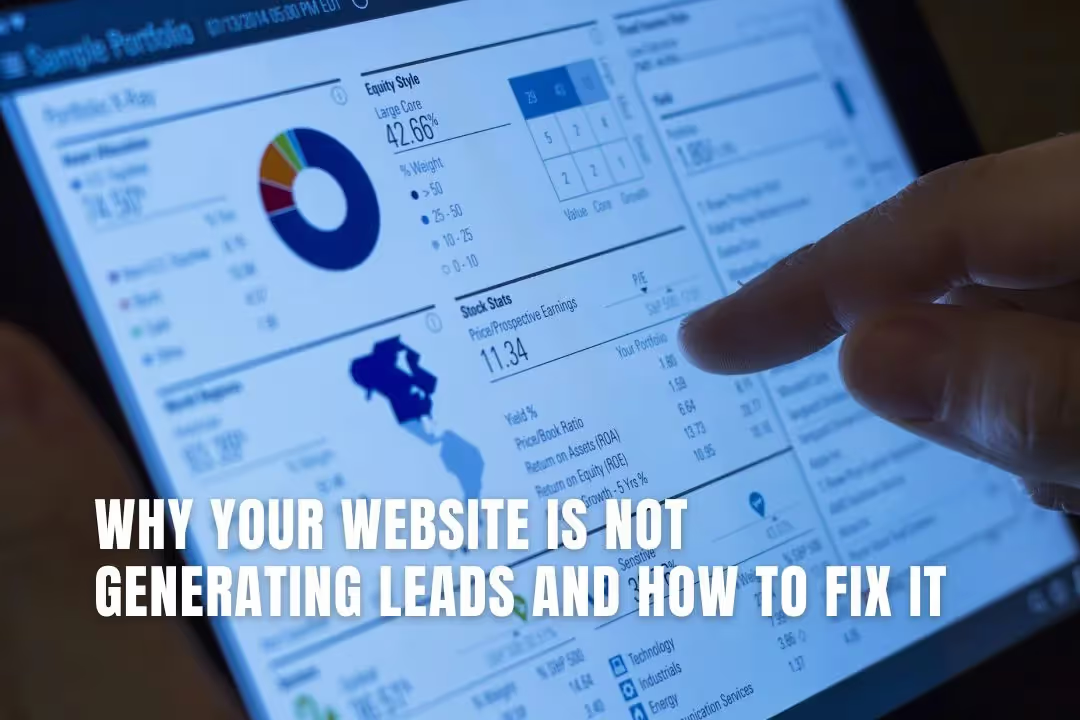
The first thing that comes to mind when I think about the word "website" is the website of my favourite store. For example, I can go onto the Nordstrom website and see what's new in their shoe department. The second thing that comes to mind is searching for a product online and then ordering it on Amazon. But how many of you are actually generating leads from your websites?
If you're not generating leads from your website, then there's something wrong with the design or user experience. If you want to know what elements should be considered when optimising call-to-action strategy or creating effective landing pages, then this article will provide some insight into why your website isn't generating leads and what actions can be taken to improve performance metrics such as bounce rate, time spent on page, and more.
To determine whether or not your website is generating leads, you need to analyse two things:
If you are not generating leads and want to change that, then you need to make changes on your site. If you are generating leads but want to improve them further, then there are ways in which this can be done as well!
Once you've got a handle on the basics, it's time to consider the design of your website.
Call to action buttons are the most important part of your website. They're what will make or break your lead generation efforts, so you need to make sure they're clear and easy to find.
In order for a call-to-action button to be effective, it needs three things:
Is your content easy to find on your website? If not, it could be the reason why your website isn't generating leads. To address this issue, conduct a content audit by reviewing each page and removing irrelevant ones. Utilise tools like Google Search Console or Ahrefs Site Audit to track visitor behaviour and identify areas for improvement. Ensure that links within your articles or videos are easily visible and stand out against competing links. By making your content more accessible, users will have a better chance of finding and engaging with it on various devices.
Have you considered user experience (UX) on your website? UX is about how well users can navigate and interact with your site. It should be easy for users to accomplish their tasks, and if they encounter difficulties, it indicates a UX problem. For instance, if visitors frequently leave an eCommerce page without making a purchase, it's essential to investigate the reasons, such as product selection or pricing issues, to encourage return visits and conversions. Prioritising a positive UX helps enhance user satisfaction and engagement on your website.
Bounce rate is the percentage of visitors who leave a website after viewing only one page. It's a good indicator of how well your website is optimised for conversions, and it can help you determine whether or not you should optimise certain pages or sections of your website.
If you have a high bounce rate, it means that the content on that particular page isn't relevant to your visitors' needs, or perhaps they don't see it as valuable enough to stay on the site long enough to find what they want. Either way, this shows that there's something wrong with either what's being said or how it's being said.
A well-designed website is essential for creating leads. A website can be a powerful marketing tool, but only if it's designed properly. There are several things you should consider when designing your website:
Is your website failing to generate leads despite your efforts? Here are answers to frequently asked questions that provide insights into common reasons why your website may not be generating leads and practical solutions to fix the issues. Explore strategies to evaluate your website design, improve CTAs, enhance landing pages, create compelling content, implement lead capture forms, utilise live chat, and optimise for search engines.
Common reasons why a website may not generate leads can include unappealing design, an outdated or unprofessional appearance, a lack of differentiation from competitors, irrelevant content, and boring or unhelpful blog posts. To address these issues, focus on improving the visual appeal of your site, ensuring it reflects your unique value proposition. Update your content to provide valuable solutions and engage visitors. By addressing these aspects, you can enhance your website's lead generation potential.
There are several ways you can assess the design and user experience of your website to improve lead generation.
When optimising your call-to-action strategy, there are several factors to consider:
To create effective landing pages that capture leads:
To attract and convert visitors into leads, implement effective content strategies. Firstly, optimise your title and meta description with relevant keywords without overusing them. Make sure your content is easy to find by incorporating breadcrumbs or clear navigation menus for seamless exploration. Additionally, include alt tags for images and graphs, enabling mobile users to understand visual elements. Provide valuable and informative content that addresses your target audience's needs and interests. Consider the frequency of content delivery to accommodate both weekly and daily visitors, ensuring consistent engagement. Lastly, continuously analyse and optimise your content strategies based on user feedback and data to maximise lead generation potential.
The best way to increase leads from your website is by improving your design, content and call-to-action strategies. By doing this, you will be able to create a more compelling online presence that attracts visitors and converts them into customers.